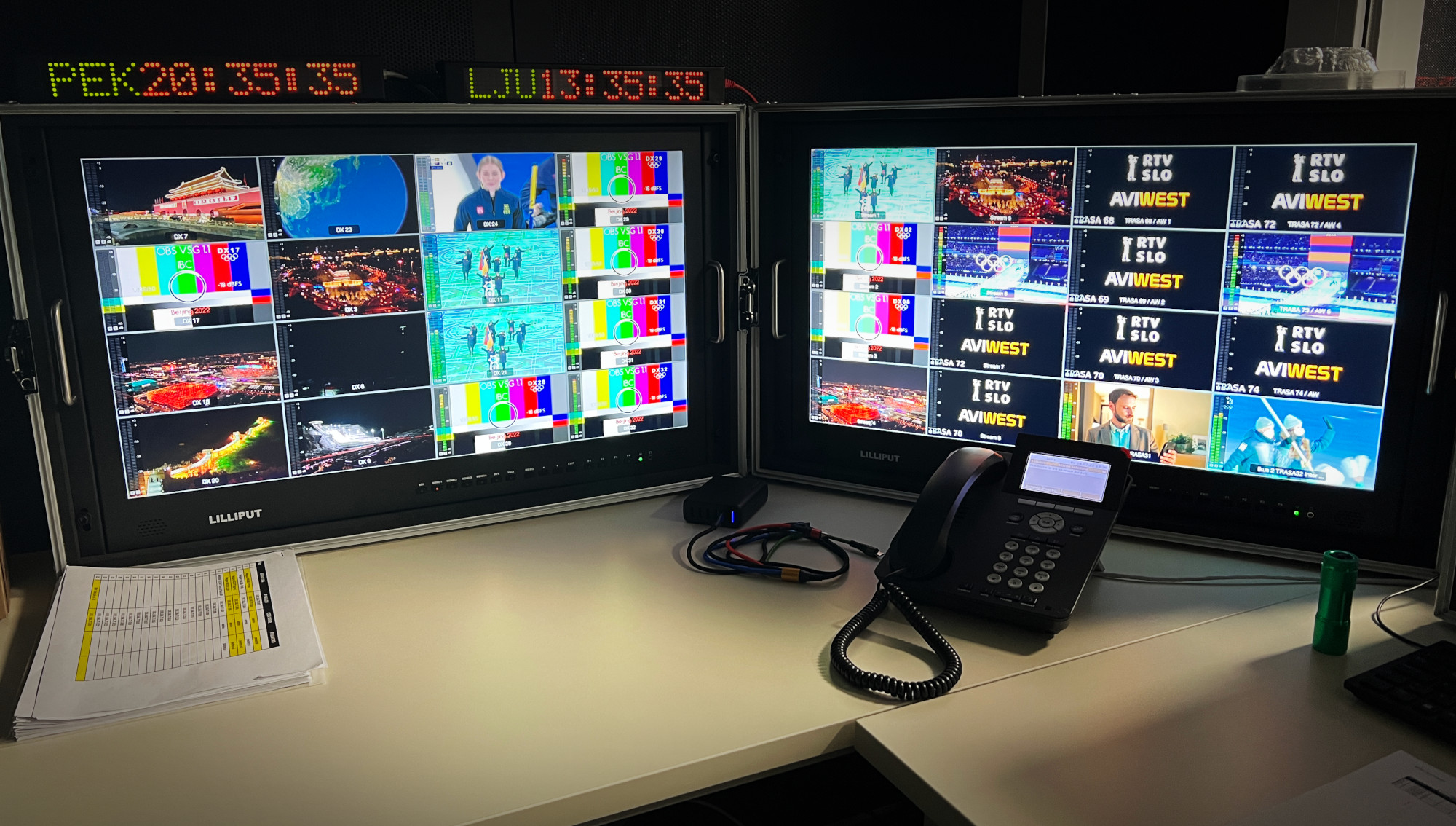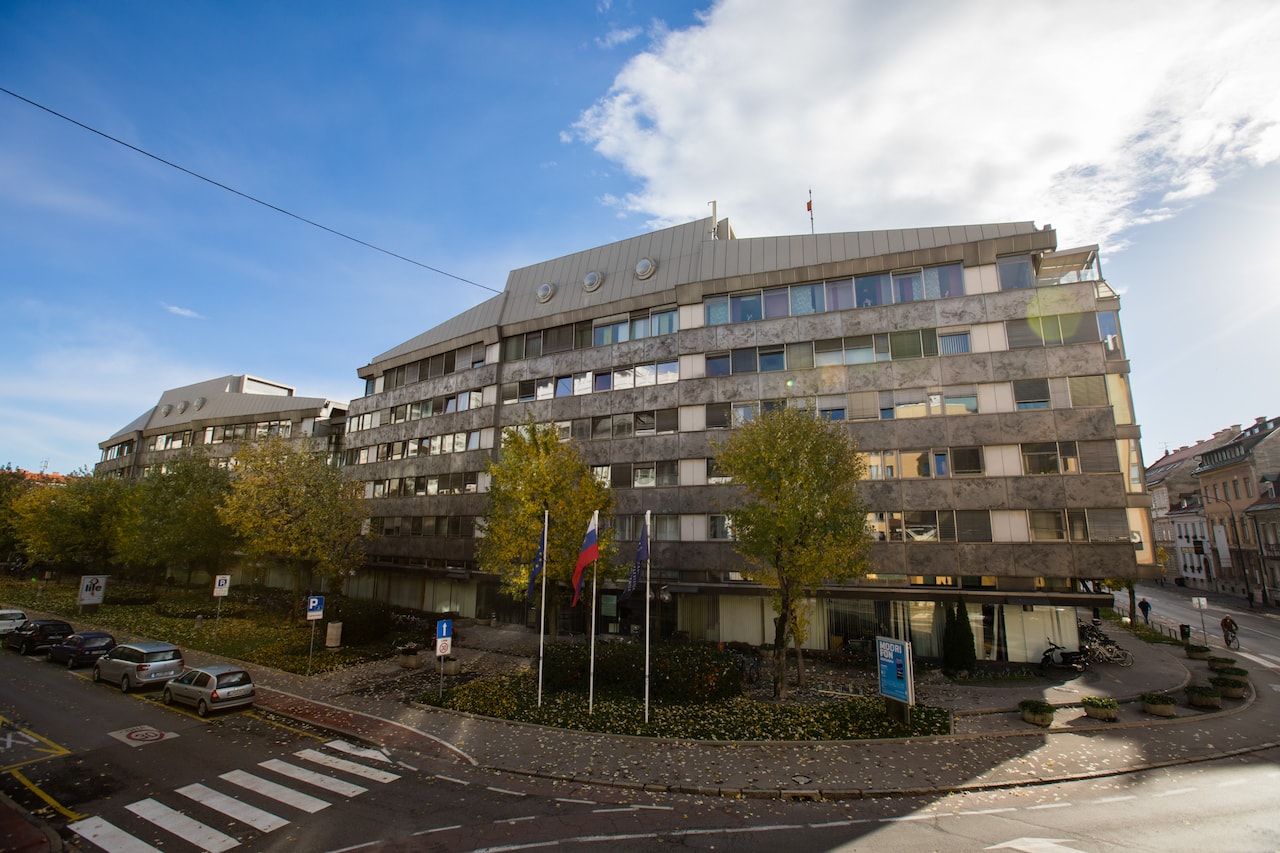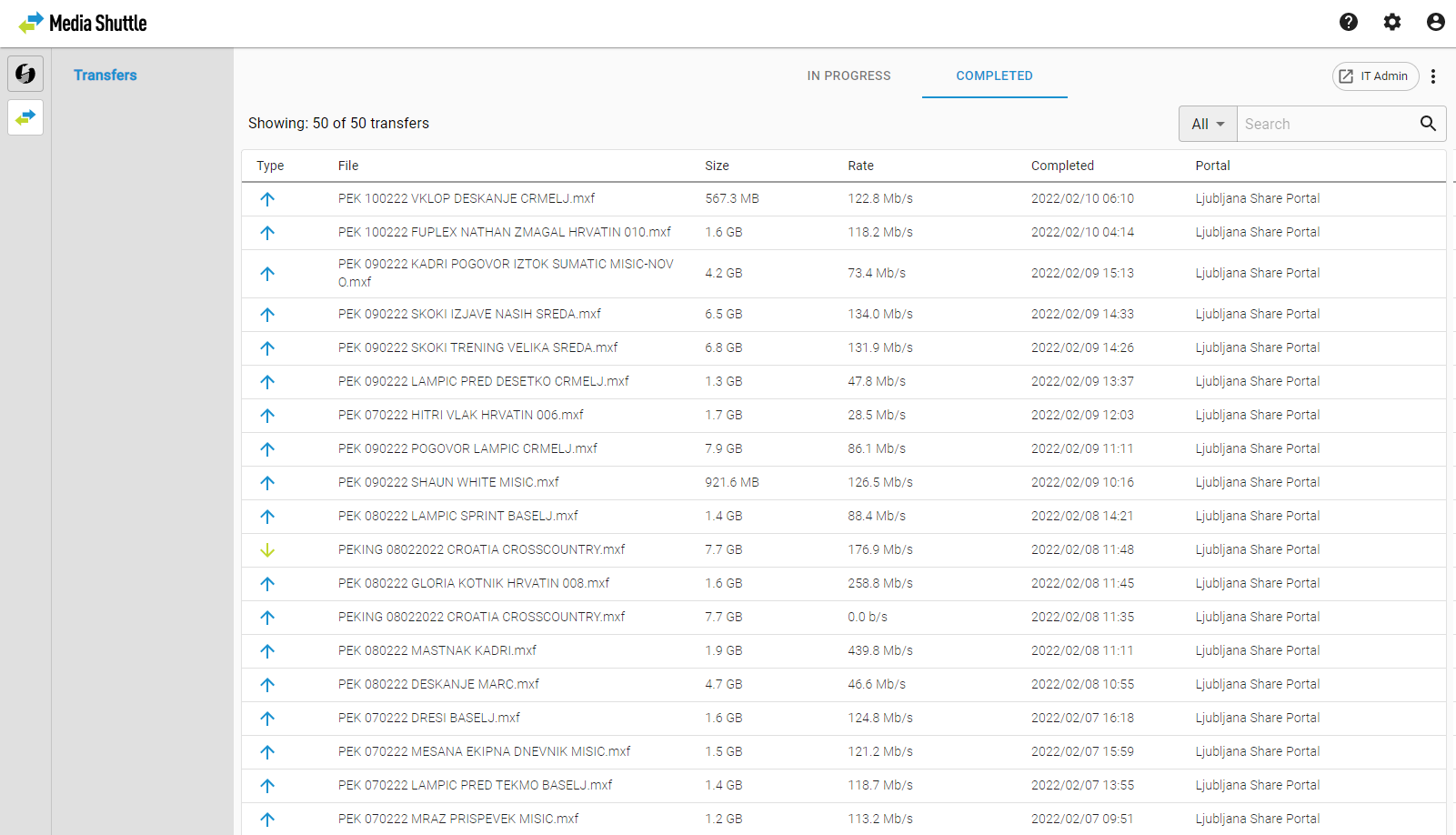RTV Slovenia Jumps Over Satellites and FTP, Lands on Signiant
National public broadcaster upgrades its Olympics workflow

Located in the picturesque capital city of Ljubljana, national public broadcaster, and Olympics broadcast television rights holder from 2016-2022, RTV Slovenia provided news, entertainment, and sports programming for more than 60 years.

For the first 30 years, it was part of RTV Yugoslav Radio Television (JRT). RTV Slovenia produces programs for three national TV channels, two regional TV channels, two TV channels for the Italian and Hungarian national communities, three national radio channels, regional radio programs and a radio program for foreign citizens.
Like many countries, the Olympic Games generate national interest and is one of RTV’s most watched events. RTV provides access to local, national and international coverage to roughly two million people for the duration of the Games.
At the 2020 Summer Olympics in Tokyo, the Slovenian men’s basketball team led by NBA superstar Luka Dončić, barely missed advancing to the gold medal match. At the Winter Olympics in Beijing 2022, Slovenians took home seven medals including two golds won by ski jumpers making Slovenia’s medal count per capita one of the highest of any nation. With such a successful showing from this small country, national interest is strong in local programming.
As recently as 2016 in Brazil and 2018 in Korea, RTV relied on satellite feeds to transfer content from the host country to their central broadcast station at home. This practice would radically change and improve by 2022.
The Old Way — Reliable but Expensive and Limiting
For the 2016 and 2018 cycle, RTV recorded and edited segments as video files on site at the International Broadcast Centre (IBC). Files then played out over one of the ten expensive satellite links RTV had secured. Video segments would be re-recorded as new files in Ljubljana using different codecs.
Video quality would suffer as a result during the transcoding process and the workflow was very slow. Highlights and packages had to wait until live satellite time was done.
New Ways, New Speed Bumps
For the pandemic-delayed event in Tokyo, RTV began replacing satellite feeds with private IP networks and using FTP to move the files. With improved long-distance internet speeds, this new approach looked to offer great cost savings, faster turnaround times, higher quality and much more flexibility — some of the many reasons why broadcasters around the world have turned to terrestrial IP networks.
Matjaz Fajdiga, RTV Head of TV Engineering explains the experience, “At Tokyo, we used an FTP service. It was not just a little, but quite problematic because of the delays, which happen between the routers. We used our network link for multiple applications like file transfers, office network or VoIP at the same time.
"As a result, we had a few technical problems,” he continued, “We needed to implement hard bandwidth limits to avoid technical problems. Without setting up some usage limits, one ‘aggressive application’ can consume more bandwidth that makes other services unreliable. Using FTP you’re thinking, will it arrive on time?”
Because of FTP’s limitations, RTV editors quite often needed to wait for new content. This created moments of panic throughout the production.
“FTP is simply unreliable, especially for such important workflows and long distances,” Fajdiga said.
Like Night & Day
Working with CS Computers, RTV’s trusted systems integrator and long-term Signiant partner in Zagreb, Croatia, Fajdiga and his team began experimenting with Signiant Jet and Media Shuttle products to transfer content from their U.S. bureau in Washington, D.C. to Ljubljana. They immediately saw how they could solve their FTP problems for the upcoming 2022 winter games in Beijing.

Prior to Beijing, Fajdiga outlined his need for bandwidth management and faster, more predictable transfer speeds. Signiant’s software allowed them to control the bandwidth which helped RTV to protect the other local traffic on the link such as the live feature streams or VOIP applications.
“We had the same pipe for Tokyo and Beijing,” said Fajdiga. “We spent a lot of time overcoming FTP issues in Tokyo. Jet and Media Shuttle solved those problems in Beijing. Simple as that. Now we just throw the file into the right watch folder, and that's it. It will very quickly appear in Ljubljana where our team can use it for different purposes. Everyone said it was like night and day."
In Beijing, RTV had two workflows — sending content field packages to the IBC or sending content automatically from the IBC back to Ljubljana. That involved playout and post-production workflows. Production crews shooting in the field could edit and send files by Media Shuttle directly to Ljubljana. Often raw materials were sent directly from the field to the IBC in Beijing to be edited and then sent via Jet to Ljubljana.
The national broadcast center was based in Ljubljana where a studio for guests and analysts was set up. Feeds from Beijing were streamed to Ljubljana, the first time satellite links were not used. Events could be live streamed while parallel feeds could be recorded at the same time for later broadcast. RTV operated three channels, sometimes broadcasting parallel events over two channels, in addition to their online platform.
“During this event, we didn't have any complaints about slowness, or missing files, or whatever. This is very important. It is ‘no news is good news.’ Where so many files are being sent in both directions, mostly from Beijing to Ljubljana, if nothing goes wrong, this is fantastic,” Fajdiga noted. “It's the peace of mind you get with Signiant. You get reliability, and you get security because of the encryption. The whole team was saying, ‘This is way better than FTP. We should've been doing this all along. What else can it do for us?’”
Post-Beijing Reliability and Security with Jet and Media Shuttle
After RTV began subscribing to the Signiant service to get files transferred reliably between Beijing and Ljubljana, they began finding other uses for it, solving other problems RTV didn't know could be solved using this service.
RTV uses Signiant’s service to get content from foreign offices, like Washington, London, Brussels, and Moscow, back into RTV.
“If you're using FTP, sometimes the transmission gets cut. The file doesn't show up. Somebody must be notified. They must resend the file starting from the beginning. Whereas, if you're using Signiant, there's Checkpoint Restart. If there's a disconnect with the file, it gets reconnected, and it picks up where it left off. You can monitor that and understand better where the file is and when it's going to arrive,” Matjaz Fajdiga, RTV’s Head of Engineering said.
Media Shuttle and Jet are also used in day-by-day connections between Ljubljana and two regional centers, Maribor and Koper, 150 kilometers away. Once an editor finishes a show or segment, it gets sent to Ljubljana. When it arrives, it is confirmed by Signiant’s email notifications.

Fajdiga appreciates this capability which adds to Signiant’s reliability. “I remember phone calls at five, six o’clock saying, ‘Where is the file? You sent it at three. It will be broadcast at eight.’ Nobody knows where it is, or why it hasn't transferred, and there's panic,” he remembers. "With Signiant, if we lose the physical link during a transfer, we don't need to transfer the whole file from scratch. We just continue where we stopped. It's a cool feature and a real lifesaver during big events.”
Conclusion — Seeing is Believing
RTV understands the value of what Signiant provides and what that means to the organization. Before, getting content delivered in country and across time zones and oceans was a nerve-wracking and tense experience for many. Now, with Signiant, there is a deeper sense of calm, trust and value.
Fajdiga concluded, “Now, we have results. When you first use the Signiant software and see how it works, we are convinced that this is good, invested money. It is a service that is reliable, there all the time, and without an interruption, like AC power. You just throw a file somewhere in some folder and forget it, certain it will arrive at the destination, defined by the folder you choose. People expect a 100% reliable, secure, and quick service like email, that it will arrive at the right place.”
Get the TV Tech Newsletter
The professional video industry's #1 source for news, trends and product and tech information. Sign up below.
Scott Carroll is Sr Manager, Marketing and Communication for Signiant.

